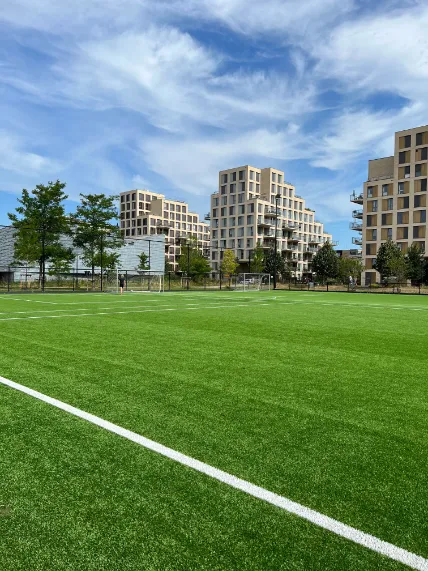Korfball, like many sports played primarily on artificial turf, faces challenges on both climate and sports performance fronts. Extreme weather conditions can make playing on artificial surfaces uncomfortable, and maintaining these fields can be costly and environmentally taxing. Additionally, the surface itself can affect the speed and bounce of the ball, posing unique challenges for players and altering the traditional dynamics of the game. Despite these challenges, korfball enthusiasts continue to adapt and innovate, ensuring the sport thrives under various conditions.
challenges and demands
Korfball, like many sports played primarily on artificial turf, faces challenges on both climate and sports performance fronts. Extreme weather conditions can make playing on artificial surfaces uncomfortable, and maintaining these fields can be costly and environmentally taxing. Additionally, the surface itself can affect the speed and bounce of the ball, posing unique challenges for players and altering the traditional dynamics of the game. Despite these challenges, korfball enthusiasts continue to adapt and innovate, ensuring the sport thrives under various conditions.
Sport challenges
The large surfaces that include korfball fields create large heat islands on hot days. These heat islands cause heat stress in cities and rising temperatures. These temperatures can be significantly reduced naturally.
Sport challenges
Playing on artificial grass has many advantages. For example, you can use the field in almost all weather conditions. A disadvantage is that contact at high speed under dry conditions can lead to dangerous situations. In a damp field there will be less physical discomfort when touched.
City challenges
Sports fields are located on every conceivable surface. From rocks to peat and from sandy soil to clay. These different types of surfaces all require a specific way of building. The combination of BlueLay and Permavoid makes it possible to construct a sports field on any type of surface.
City challenges
Waterboards worldwide are faced with a form of flooding. During heavy rain showers, streets and sewers overflow. This phenomenon will be counteracted by creating extra space to buffer rainwater and relieve the sewers.
City challenges
Conventional artificial turf fields are known for creating discomfort for players, spectators, climate and the surrounding. Due to extreme temperatures up to 70 degrees Celsius which build up on artificial fields on warm summer days players experience heavy discomfort. These situations can lead to hazardous situations.Artificial turf fields which provide a passage for water with a waterbuffer directly underneath the field provides cooling circumstances which make it safe for players to use the field, cancels the heat island effect and creates a climate adaptive field!
That's why we developed these products
The solutions crafted by DutchBlue, in collaboration with a network of specialized partners to address the challenges previously outlined. The following innovative applications represent a robust response to the complex urban and sporting obstacles, offering a promising path forward for progress and growth in the field. Read more about the revolutionary solutions below.



.webp)
.webp)